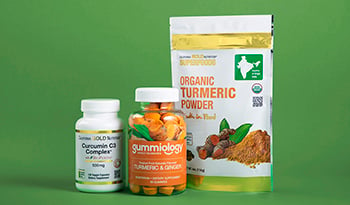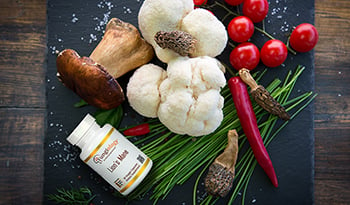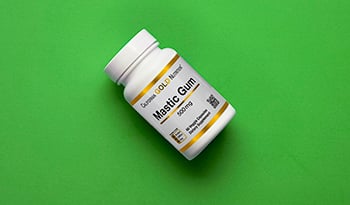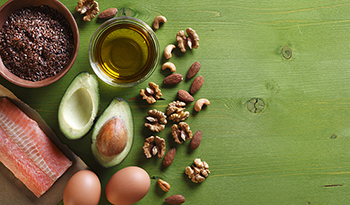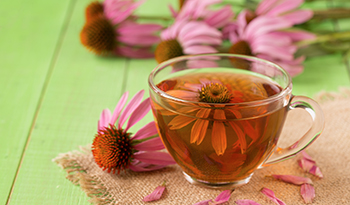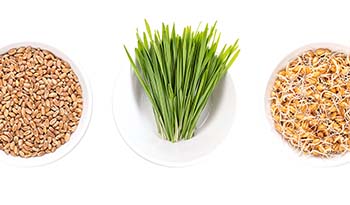Liquid Chlorophyll Is Trending In Skincare Right Now: Here's Why
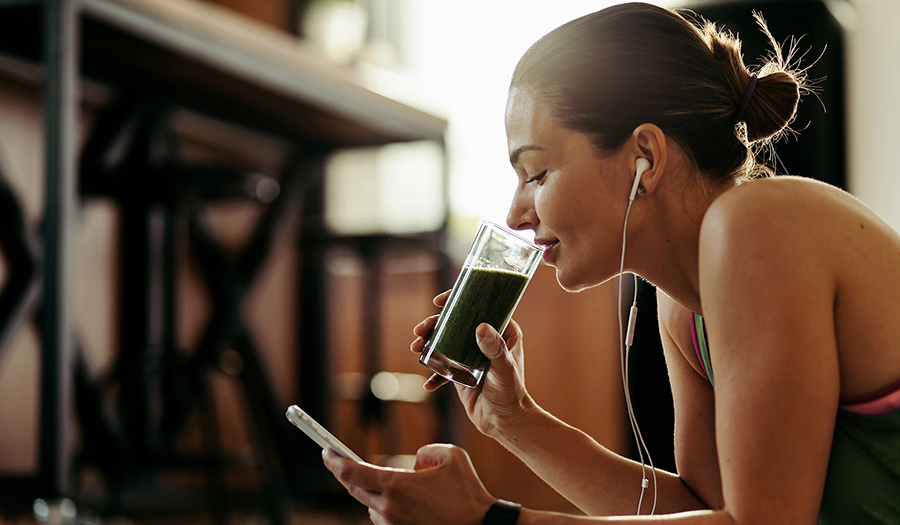
What Is Chlorophyll?
Chlorophyll is the green pigment of plants found in the chloroplast compartment of plant cells where light is converted to chemical energy in the process known as photosynthesis. Since the chlorophyll molecule is essential for photosynthesis to occur, all life on this planet is ultimately dependent upon this green pigment.
Chlorophyll as a dietary supplement is promoted for its ability to promote internal cleansing and detoxification. And since there is a strong link between gut health and healthy, radiant-looking skin, chlorophyll has become a popular “beauty from within” dietary supplement with lots of incredible testimonials. Recent social media posts have created increased awareness of the benefits of chlorophyll in promoting skin health.
Are There Different Types Of Chlorophyll?
Chlorophyll can be water- or fat-soluble. The natural chlorophyll in green plants is fat-soluble. However, most of the chlorophyll products found in health stores, however, contain water-soluble chlorophyll. Because water-soluble chlorophyll is not absorbed as well from the gastrointestinal tract as the fat-soluble form, its use has focused on improving gut health and promoting detoxification.
The basic structure of chlorophyll is similar to that of the heme molecule in hemoglobin, which is the oxygen-carrying protein in our red blood cells. The central atom in chlorophyll is magnesium instead of iron in heme.
The chemical difference between fat- and water-soluble forms of chlorophyll is that in the fat-soluble form there is a long chain of carbon molecules attached to the chlorophyll that makes it insoluble in water. To make it water-soluble, the long chain of carbons is simply cleaved from the main ring of chlorophyll and it is converted to a salt to form chlorophyllin such as sodium magnesium chlorophyllin or sodium copper chlorophyllin.
What Is Chlorophyll Used For?
Detoxification Benefits
Water-soluble chlorophyll (chlorophyllin) exerts a number of beneficial effects with most of these effects occurring within the gastrointestinal tract since it is poorly absorbed.1 There is a popular axiom related to the benefits of chlorophyll and green foods, “When you are green inside, you are clean inside.”
Chlorophyll is often used to help control body, fecal, and urinary odor. It may also help to reduce odor related to halitosis (bad breath). The beneficial effect is largely due to chlorophyll’s internal cleansing and astringent qualities (the ability to attract water). It may also favorably influence the microbiome and reduce the formation of odorous compounds. In constipated individuals, chlorophyll promotes regularity.2,3
Antioxidant Benefits
Water-soluble chlorophyll has also shown a variety of antioxidants and protective measures in experimental studies.1,4,5 Water-soluble chlorophyll may also help improve white blood cell formation when it is impaired. In one study, 105 patients with low white blood cell counts caused by various factors were randomized into 3 groups:
A. Chlorophyllin tablets at a dose of 40 mg, three times per day.
B. Filgrastim (a.k.a., Neupogen or Leucogen) tablets at the dosage of 20 mg, three times per day.
C. Placebo (vitamin C) tablets at a dosage of 100 mg, three times per day.
All the subjects were treated for 1 month. The change in the white blood cell count (WBCC) showed that patients treated with water-soluble chlorophyll significantly increased the WBC. The treatment proved to be markedly effective in 34 cases, effective in 17, and ineffective in 9, the total effective rate being 85%, which was significantly higher than that in the placebo group (26.7%) and similar to that in the filgrastim (83.3%). No adverse reaction was found with the chlorophyllin treatment.6
Filgrastim is produced by a genetically modified organism to mimic a compound in the body, granulocyte colony-stimulating factor (G-CSF), that promotes white blood cell production. Apparently, chlorophyllin produces a similar result though the mechanism of action is not known yet. This implies that water-soluble chlorophyll should be researched more fully given its significantly lower cost, greater safety, and lack of side effects. Filgrastim is on the World Health Organization's List of Essential Medicines. Perhaps chlorophyll will make it to that list someday.
Skin Benefits
Chlorophyll has become a popular “beauty from within” dietary supplement based upon many positive testimonials. It may be helpful indirectly by promoting intestinal cleansing, but it may also produce some direct effects on the skin as well. Topical preparations of a gel containing sodium copper chlorophyllin have shown it to produce positive clinical results in pilot studies in people with acne-prone skin with enlarged pores; people with rosacea and facial redness; and women with photodamaged facial skin.7-9 Whether internal ingestion of chlorophyll produces similar benefits has not been determined in clinical studies, but it is certainly possible.
What Is The Typical Dosage Of Chlorophyll?
Water-soluble chlorophyll is available in both liquid form and solid form (capsules and tablets). The typical dosage is 100 mg of chlorophyllin one to three times daily.
No side effects or adverse drug reactions are known. It is a strong pigment, so drinking liquid preparations may turn the tongue very dark. Consumption of water-soluble chlorophyll may also produce very dark stools.
References:
- Solymosi K, Mysliwa-Kurdziel B. Chlorophylls and their Derivatives Used in Food Industry and Medicine. Mini Rev Med Chem. 2017;17(13):1194-1222.
- Young RW, Beregi JS Jr. Use of chlorophyllin in the care of geriatric patients. J Am Geriatr Soc. 1980; 28:46-47.
- Nahata MC, Sleccsak CA, and Kamp J. Effect of chlorophyllin on urinary odor in incontinent geriatric patients. Drug Intel Clin Pharm 1983;17:732–34.
- Sarkar D, Sharma A, Talukder G. Chlorophyll and chlorophyllin as modifiers of genotoxic effects. Mutat Res. 1994 Dec;318(3):239-47.
- Nagini S, Palitti F, Natarajan AT. Chemopreventive potential of chlorophyllin: a review of the mechanisms of action and molecular targets. Nutr Cancer. 2015;67(2):203-11.
- Gao F, Hu XF. Analysis of the therapeutic effect of sodium copper chlorophyllin tablet in treating 60 cases of leukopenia. Chin J Integr Med. 2005 Dec;11(4):279-82
- Stephens TJ, McCook JP, Herndon JH Jr. Pilot Study of Topical Copper Chlorophyllin Complex in Subjects With Facial Acne and Large Pores. J Drugs Dermatol. 2015 Jun;14(6):589-92.
- Vasily DB. Topical Treatment With Liposomal Sodium Copper Chlorophyllin Complex in Subjects With Facial Redness and Erythematotelangiectatic Rosacea: Case Studies. J Drugs Dermatol. 2015 Oct;14(10):1157-9
- Sigler ML, Stephens TJ. Assessment of the safety and efficacy of topical copper chlorophyllin in women with photodamaged facial skin. J Drugs Dermatol. 2015 Apr;14(4):401-4.
DISCLAIMER:This Wellness Hub does not intend to provide diagnosis...
















































































 Table of Contents
Table of Contents



